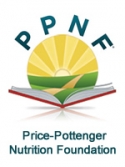An Interview with Cass Ingram, MD
CassIngramTreeChaga.jpg

Photo courtesy of Cass Ingram, MD
Cass Ingram, MD and chaga, a type of fungus that grows on birch trees in cold regions
Cass Ingram, MD, is the author of more than 20 books, including The Cure is in the Cupboard, Natural Cures for Health Disasters, How to Eat Right and Live Longer, and Natural Cures for High Blood Pressure. A popular media personality, he has appeared on over 5,000 radio and TV interviews teaching the public and professionals about the power of natural medicine.
The following article is based on an interview with Dr. Ingram and includes additional information drawn from his latest book, The Cure is in the Forest, which reviews the benefits of chaga.
Dr. Ingram, would you begin by explaining what chaga is?
Chaga (Inonotus obliquus) is a type of fungus that grows on birch trees in cold regions such as Siberia, northern Canada, Alaska, and some northern parts of the continental United States. It is of particular importance because it has been found to have a wide range of medicinal properties. Although these fungi are often referred to as "chaga mushrooms," botanists are not sure if they actually are a true mushroom. Culinary mushrooms are composed of soft plant fiber and are typically umbrella shaped, with gills on the underside. In contrast, chaga are more closely related to woody bracket fungi. In fact, chaga has recently been reclassified as a member of the Hymenochaetaceae family, which includes a number of other dark, woody botanicals that grow on bark and decaying trees. On average, chaga are 8 to 12 inches in diameter, with a rough, bark-like surface, and they may reach a weight of 30 to 35 pounds. Each chaga takes on a unique shape, some of them being almost humanoid in form.
The chaga have a symbiotic relationship with the birches on which they grow, and often help to heal the trees. If you insert chaga into a dying tree, frequently, that birch will recover. If a birch is damaged and splintered at the top, chaga will fill in and eventually heal the damaged bark. When the wind has caused a tree to lean and rub against another, chaga can repair the lesions in the bark of both trees.
As it grows, this growth feeds on the nutrients and compounds found in the birch tree. Looking at this another way, it predigests the birch's nutrients, concentrating them in a form more readily available to humans. In essence, the chaga serves as a vital chemical factory for substances of great value to our health.
Read the full article in the Winter 2011-12 issue of the Price-Pottenger Journal of Health and Healing.
For more information about Chaga, see Dr. Ingram's book, The Cure Is In The Forest: The Healing Powers of Wild Chaga Mushroom, available from PPNF.
The Price-Pottenger Nutrition Foundation® is a non-profit education foundation committed to reversing the trend of declining health in our modern world.
They teach both the public and health professionals the proven principles from nutrition pioneers Weston A. Price, Francis M. Pottenger, Jr., and other leading health experts.
Join the Price-Pottenger Nutrition Foundation (PPNF) and be a part of an international network of people dedicated to achieving optimal health.
Originally published in in the Winter 2011-12 issue of the Price-Pottenger Journal of Health and Healing. Used with permission.


